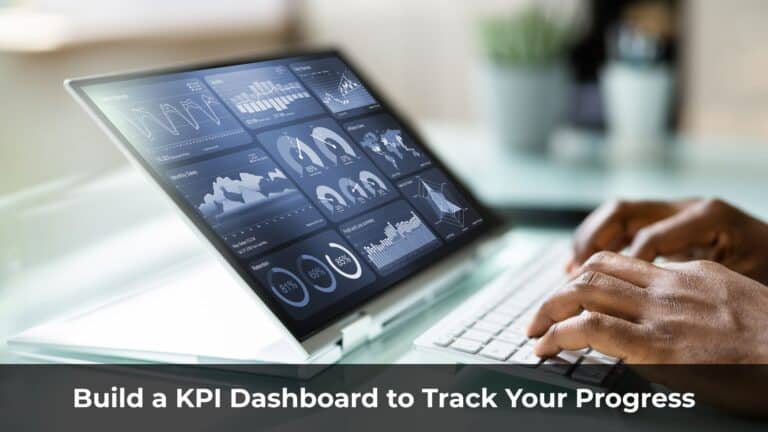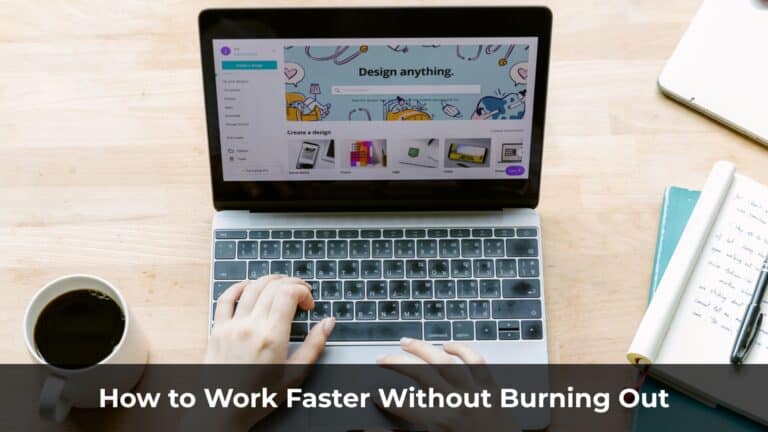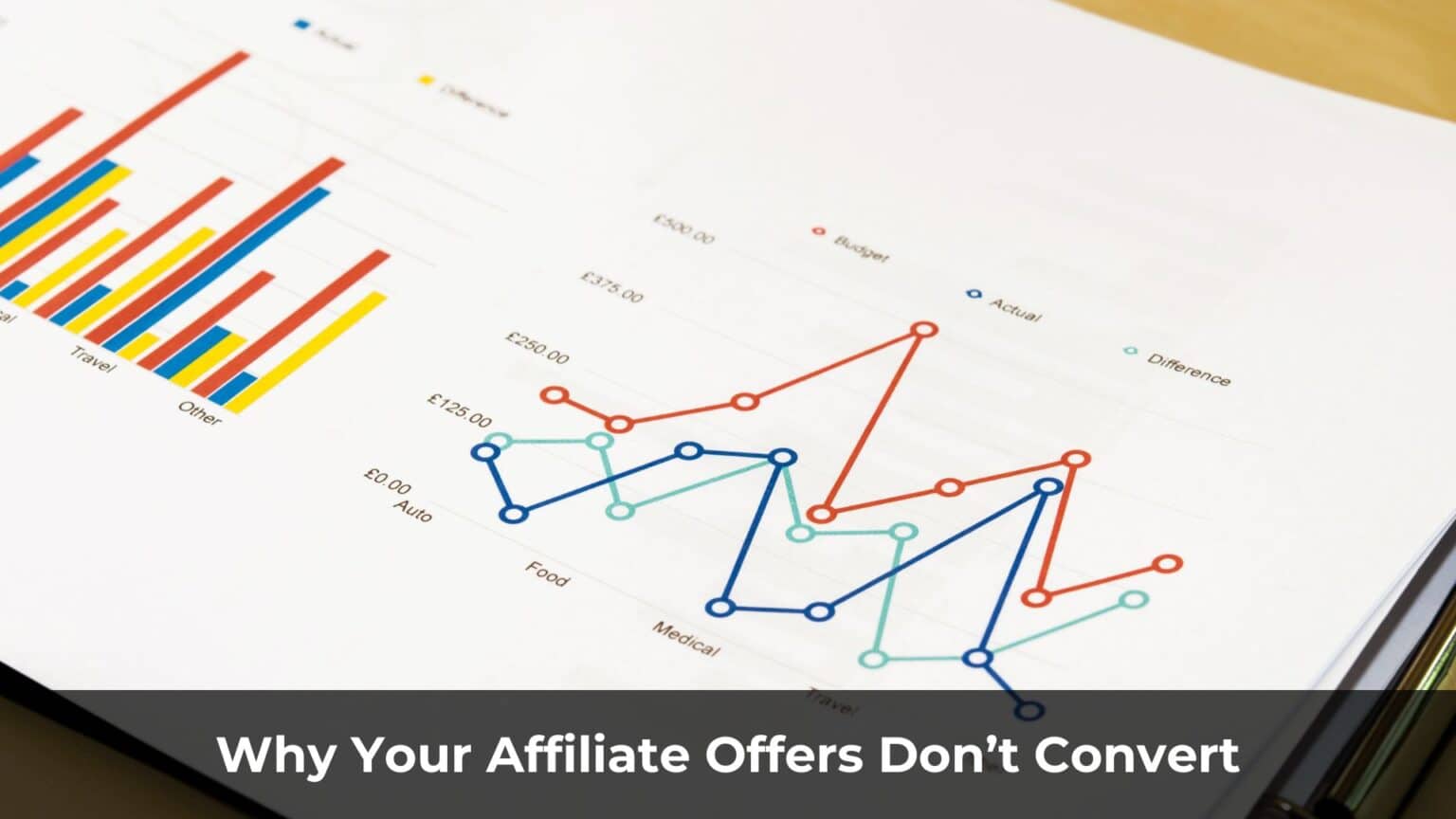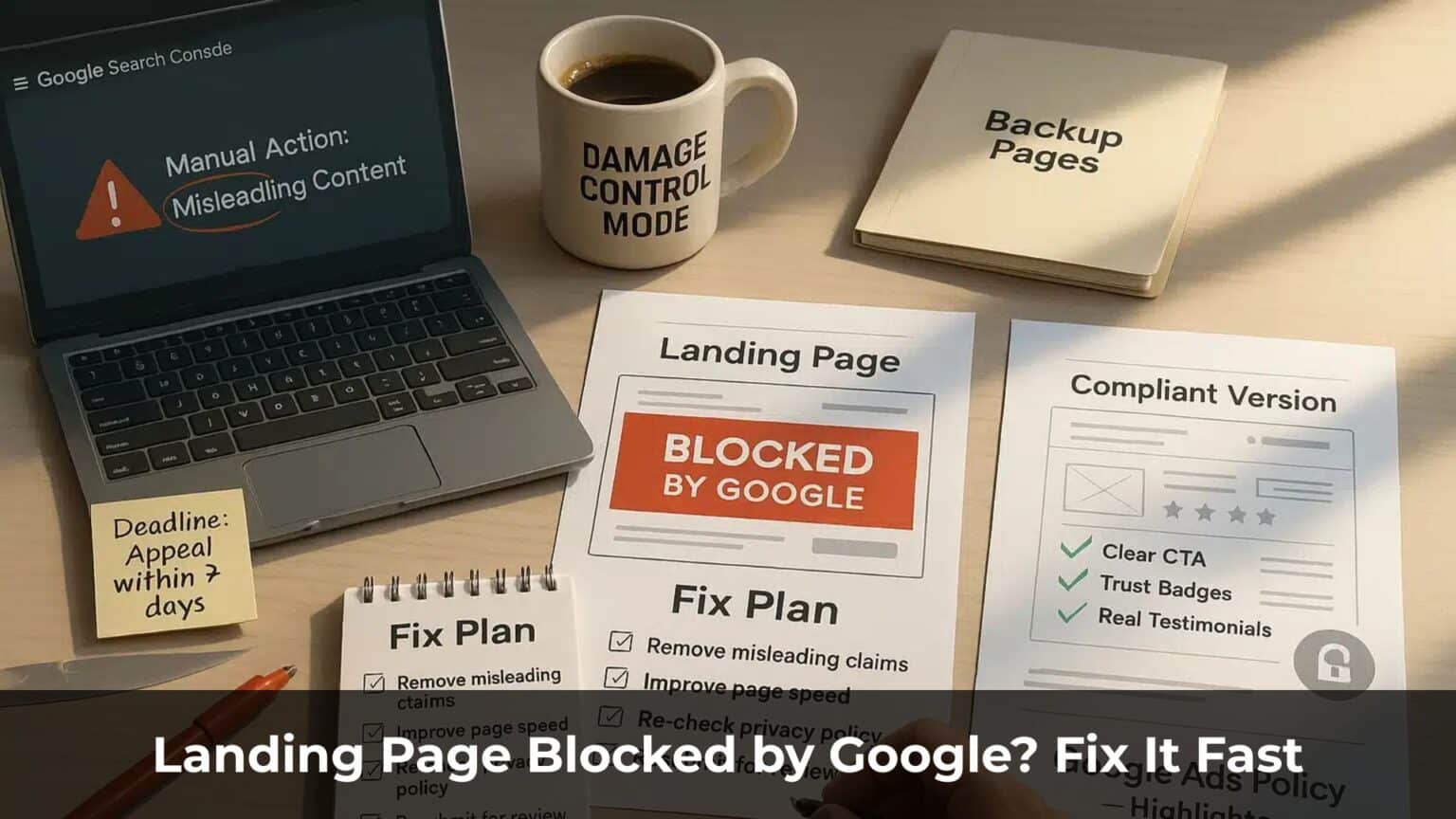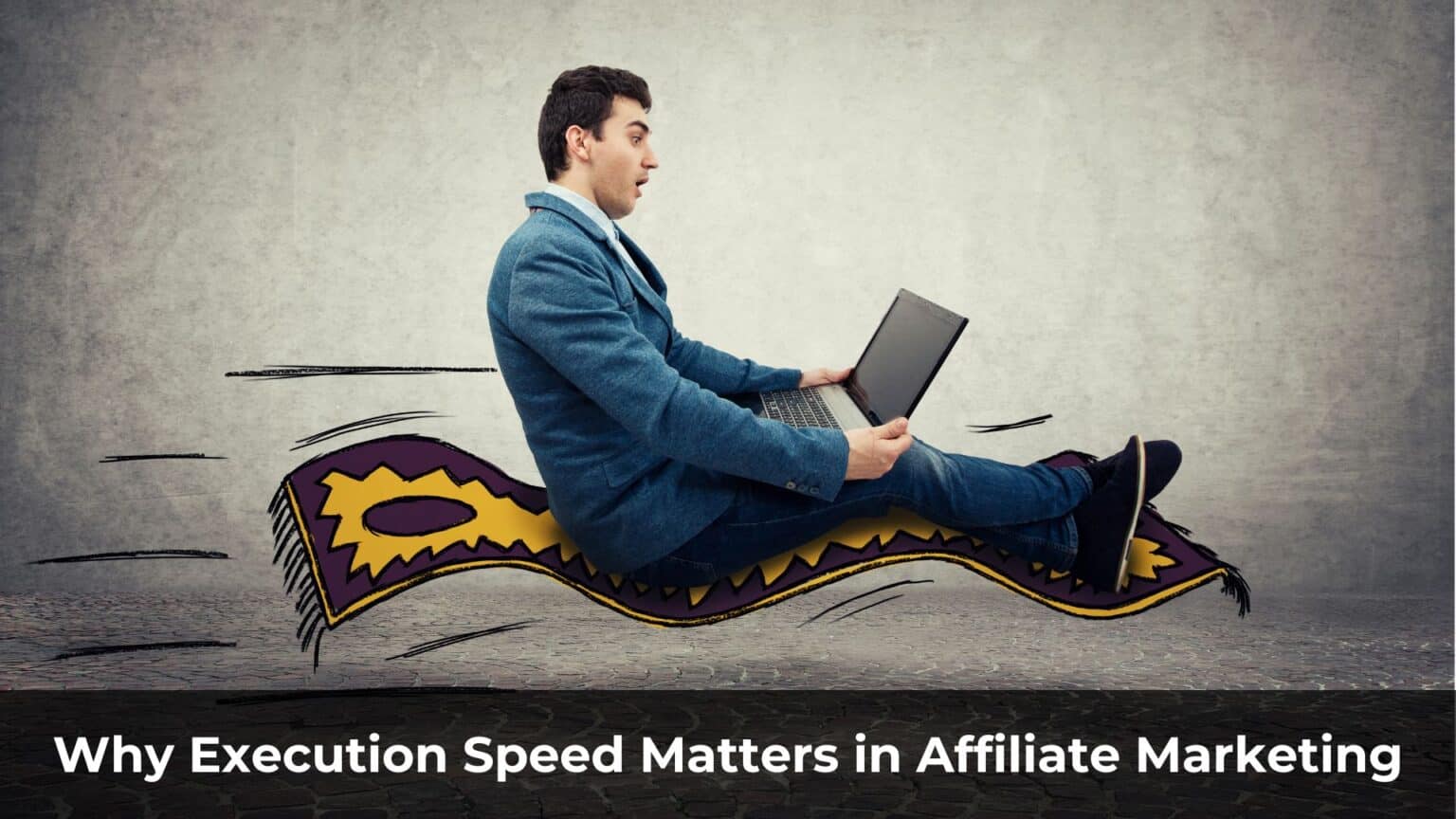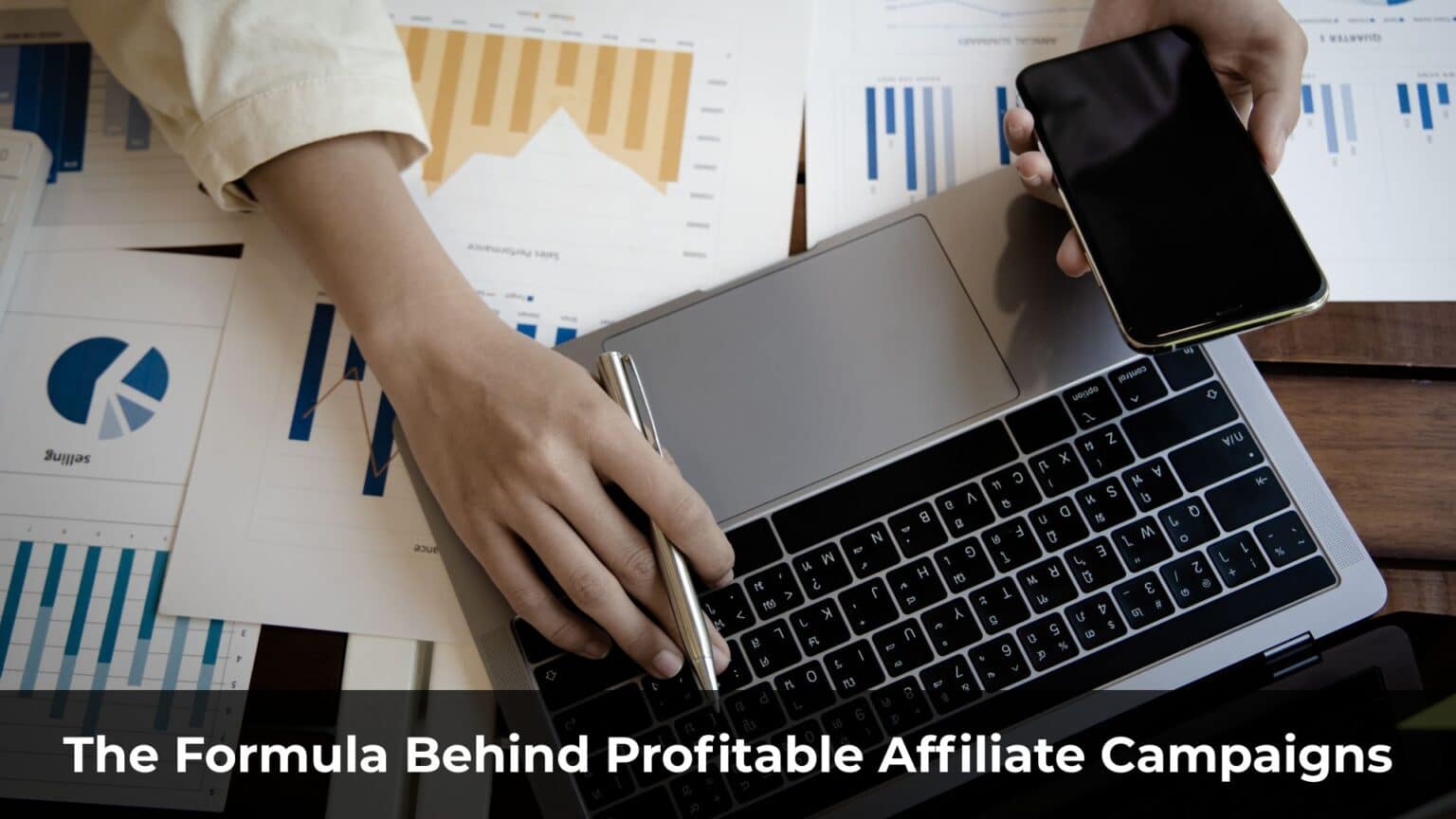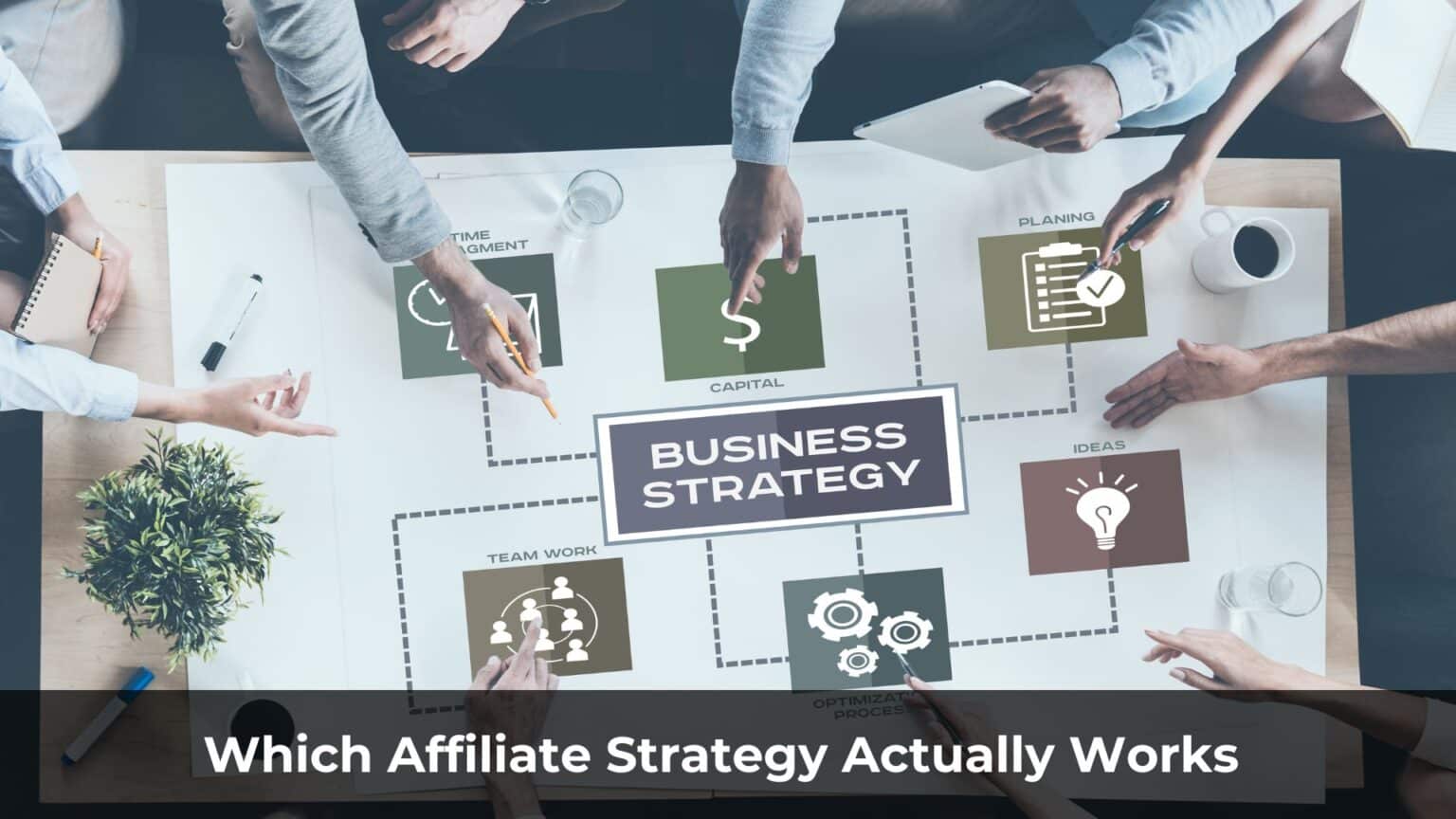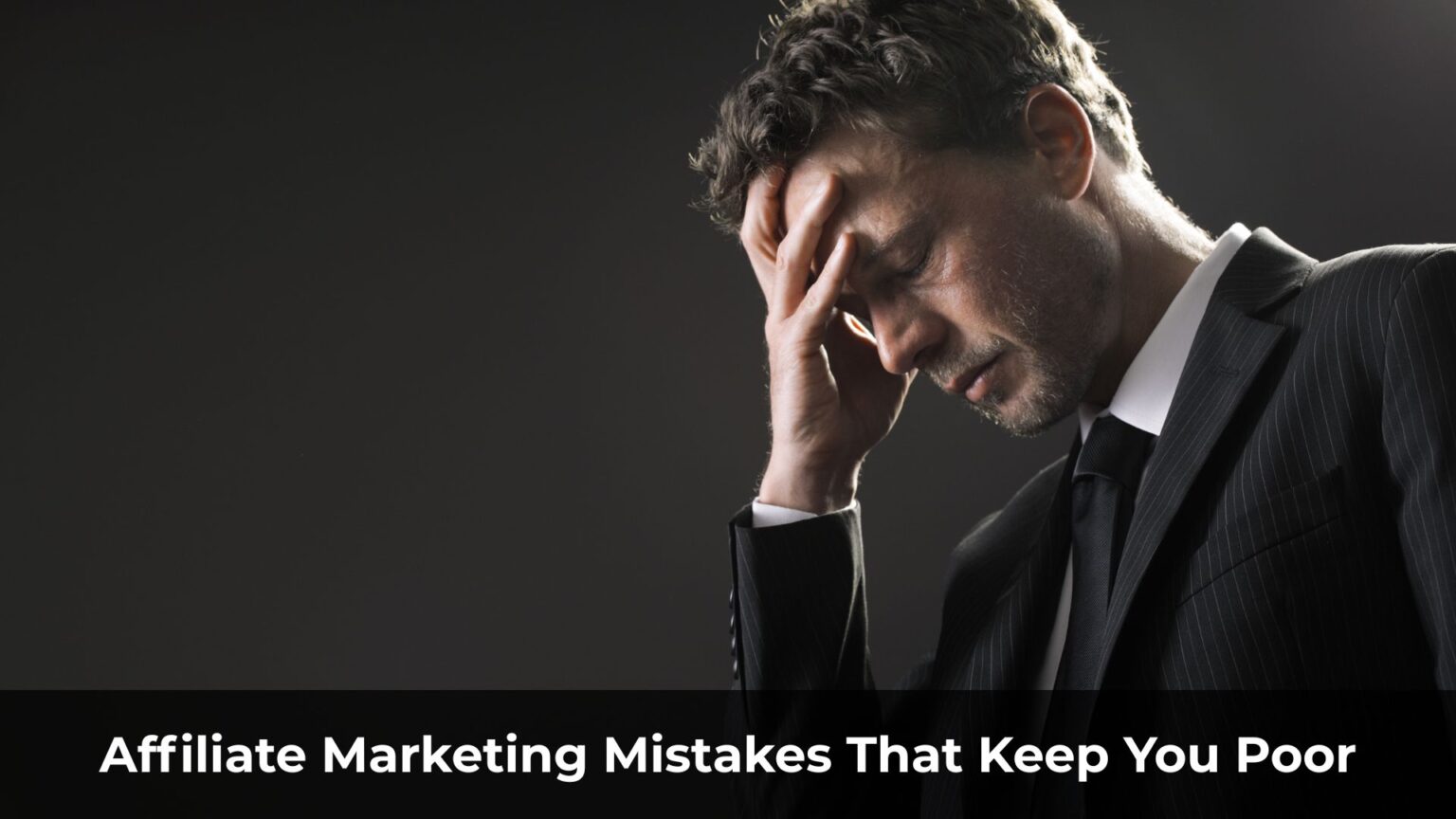Back in 2021, I launched an affiliate campaign that brought in $500 a day.
At the time, it felt like I was on top of the world. For someone who had struggled through countless failed campaigns, hitting $500 daily was a major milestone.
Curious—and maybe a little cocky—I asked my affiliate manager:
“So… how much are the top affiliates making?”
He looked at me and casually said, “Over $5,000 a day.”
My jaw dropped.
It wasn’t just disbelief. It was confusion.
How was that even possible?
What were they doing that I wasn’t?
The truth was, I had no idea how to scale.
Table of Contents
ToggleWhat Does It Mean to Scale an Affiliate Campaign?
In simple terms, scaling means increasing traffic to a profitable campaign so it can generate even more profit—sometimes 5x or even 10x more.
Think of it like this:
How does a traditional offline business grow revenue?
- A restaurant might expand through franchising—just like McDonald’s.
- A company could boost revenue by adding more distributors.
- A product creator might launch multiple products instead of relying on just one.
In my case, I had a campaign making $500 a day. Naturally, I thought:
“If I can just run 10 campaigns like this… that’s $5,000 a day!”
Sometimes, it’s not as hard as you think.
But here’s the key:
Having a profitable campaign is only half the battle.
Once you’ve got a winner, your next mission is to squeeze as much profit from it as possible—before it dies.
In this post, I’ll break down the different ways I’ve scaled affiliate campaigns over the past 8 years.

Before You Scale: Get This Right First
Before you even think about scaling,
there’s one thing you absolutely need: A sustainable ROI.
This is where many affiliates go wrong—they try to scale too early.
Instead of optimizing a bit more and squeezing extra profit, they rush to push more traffic… and end up burning their budget.
Here’s the truth:
A campaign with 70% ROI is much easier to scale than one with 20%.
Why? Because it’s more stable. It can handle fluctuations. It gives you room to test.
Here are a few practical ways to increase profitability before scaling:
- Test new offers (you might find one that converts better).
- Cut low-quality placements. If you’re running ads across multiple sites, pause the ones that don’t perform.
- Sharpen your targeting.
- Improve your ads, angles, and landing pages.
Personally, I don’t scale anything unless it’s hitting at least 50% ROI.
Let me say it again:
If your campaign isn’t solid, don’t scale.
But if it is?
Then let’s talk about the two main types of scaling:
Horizontal and vertical.
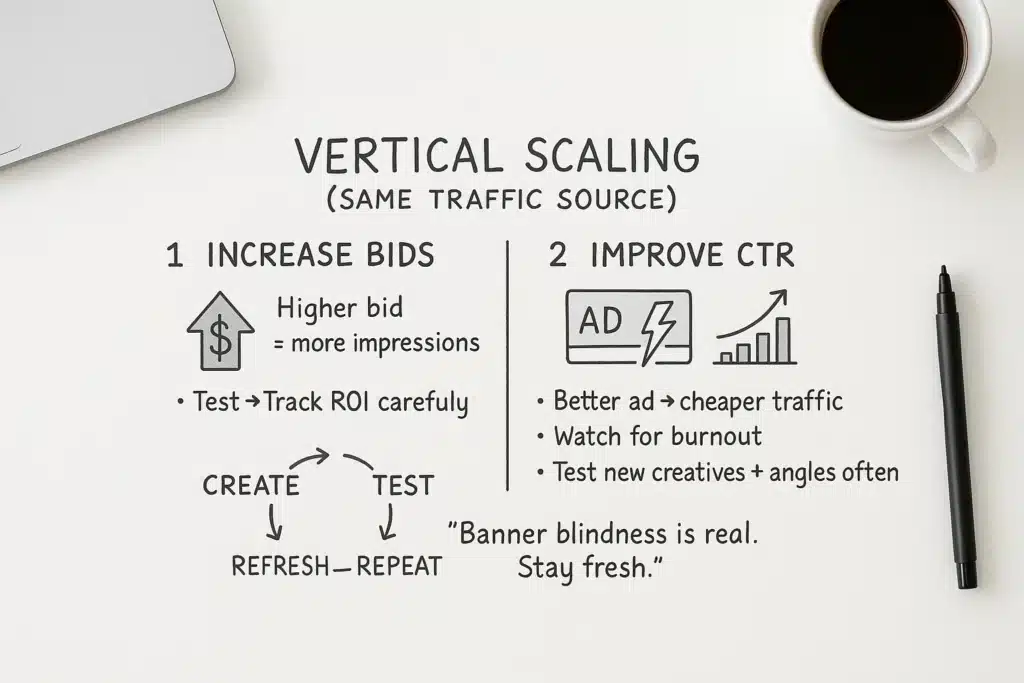
Vertical Scaling (Going Deeper with the Same Traffic Source)
Vertical scaling means expanding within your current traffic source—pushing the campaign harder without changing platforms.
Here are a few proven ways to do it:
1. Increase Your Bids
Sometimes, simply raising your bid unlocks more traffic. The higher you bid, the more impressions your ad gets—it’s that simple.
Test it. See how traffic volume changes. Monitor the ROI carefully.
2. Improve Your Click-Through Rate (CTR)
The better your ad performs, the cheaper your traffic becomes.
Higher CTR means more clicks for the same ad spend. But be warned: ads burn out fast. Banner blindness is real.
That’s why you need a repeatable system for creating fresh creatives and testing new ad angles—constantly.
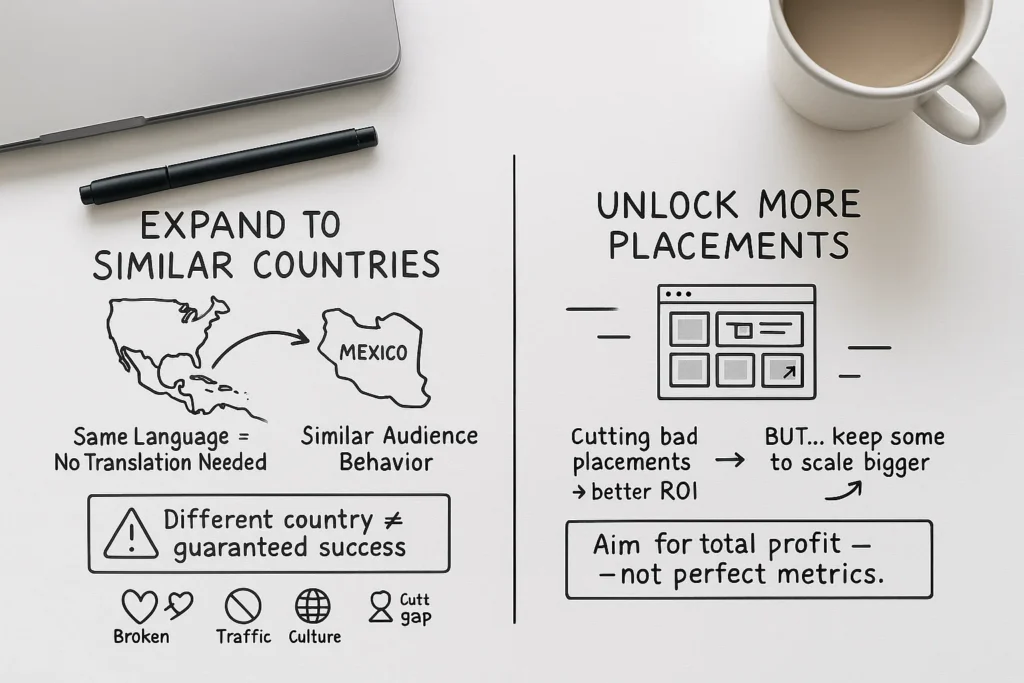
3. Expand to Similar Countries
This one’s a personal favorite. Some offers allow you to run in 30 or even 40+ GEOs.
Start with countries that are culturally and linguistically similar to the one where your campaign is already profitable.
For example, if you’re winning in Colombia, it’s easier to scale to Mexico than to France.
Why?
- No need to translate the landing page.
- Similar audience behavior.
- Targeting options tend to overlap.
Just remember: a winning campaign in one country doesn’t guarantee success elsewhere.
Cultural differences, weak offer performance, or low-quality traffic can kill your margins.
4. Unlock More Placements
Some ad networks give you access to hundreds of placements.
While cutting underperforming placements can improve ROI, it may also limit your scale.
Instead, focus on increasing the total profit from the campaign—even if some placements perform below average. That way, you can handle more volume.
5. Test Other Ad Formats Within the Same Source
Many traffic sources sell multiple ad types.
- Running Facebook Newsfeed ads? Try right-hand column.
- Running pop ads on ExoClick? Test banners too.
If a traffic source is already profitable, it’s worth exploring what else they offer. You’ve validated the quality—now dig deeper.
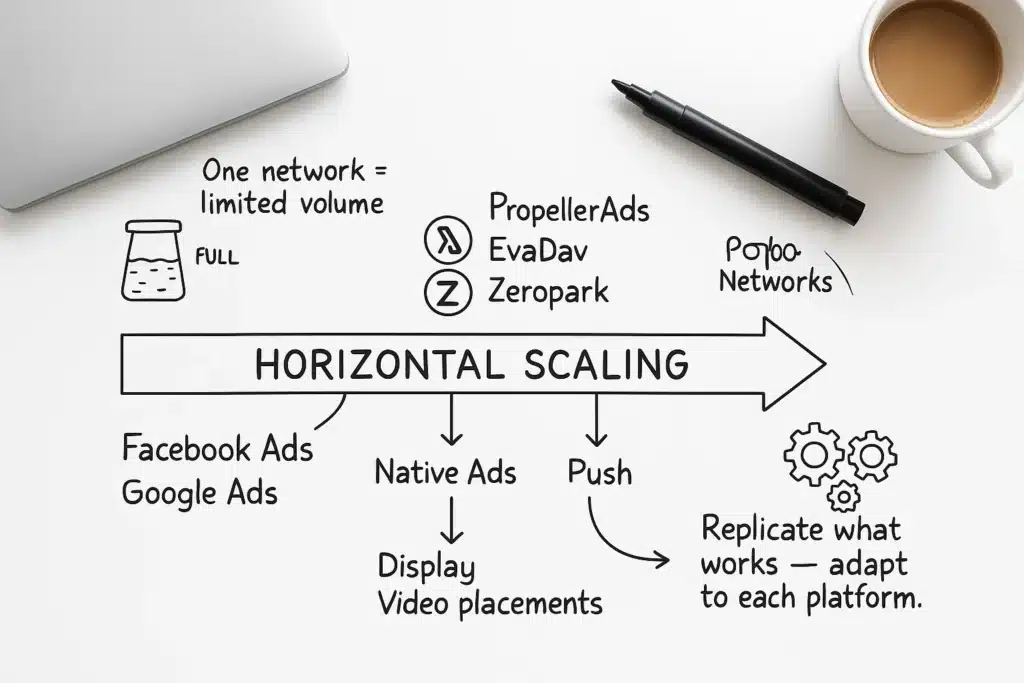
Horizontal Scaling (Going Wider Across Traffic Sources)
Sometimes, one ad network alone can give you a ton of traffic.
But eventually, you’ll hit a ceiling—there’s only so much volume you can squeeze out of one place.
That’s when horizontal scaling comes in.
The fastest way to scale horizontally is to move into similar traffic sources.
For example, if you’re getting good results with PropellerAds, try expanding to other pop networks like EvaDav.
Once you’ve tested across the “lookalike” networks, you can explore different types of traffic altogether.
For instance:
- Scale from Facebook Ads to Google Ads.
- Or from native ads to push notifications.
- Or from one ad network’s display traffic to another’s social or video placements.
The key is to replicate what’s already working, while adapting to the nuances of each platform.
Keeping Your Campaign Alive
You can only manage so many campaigns at once.
There’s a limit to how much your brain—and your time—can handle.
And here’s a painful mistake I’ve made before:
While I was busy scaling… my original profitable campaign quietly died.
That’s the worst-case scenario.
So what’s the solution?
You need to maintain your winning campaign even while scaling.
That means:
- Testing new offers regularly
- Trying fresh ad angles
- Continuously uploading new creatives before old ones burn out
Think of it like this:
Fortify your castle before you go conquering new lands.
Because what’s the point of scaling if your main revenue stream collapses while you’re not looking?
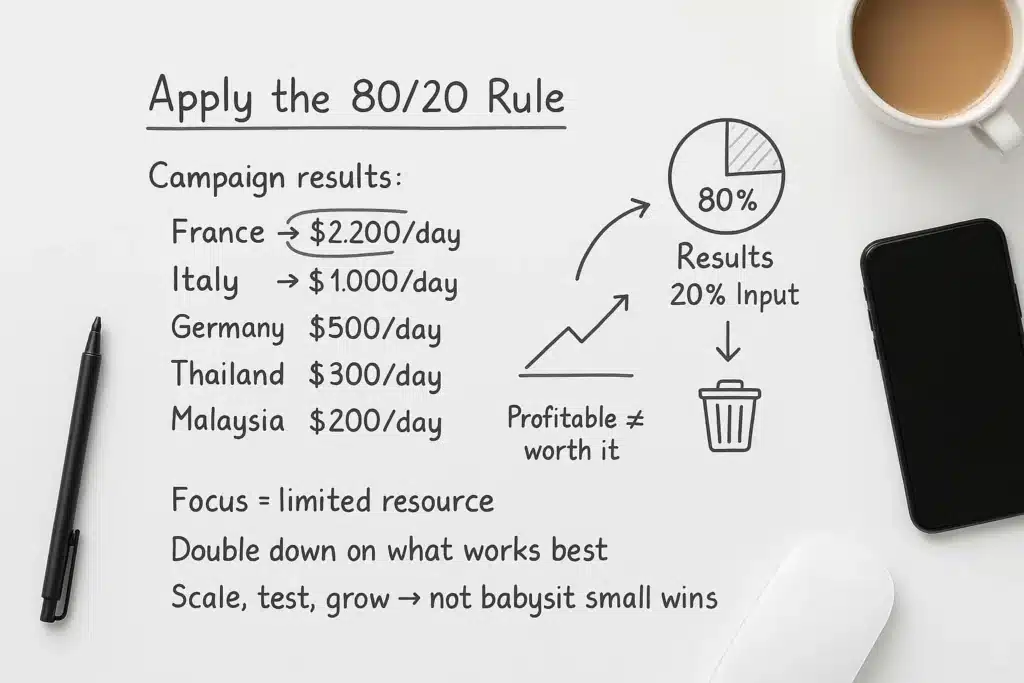
Apply the 80/20 Rule
The 80/20 rule—also known as the Pareto Principle—states that 80% of results come from 20% of the input.
Let me give you a quick example.
Imagine I’m running 6 affiliate campaigns on the same traffic source:
- France – $2,200 profit per day
- Italy – $1,000 profit per day
- Germany – $500 profit per day
- Thailand – $300 profit per day
- Malaysia – $200 profit per day
Clearly, France and Italy are the winners.
Now here’s the part that surprises people:
I would shut down the Thailand and Malaysia campaigns—even if they’re profitable.
You might think:
“Wait, why kill a campaign that’s making $500 a day? That’s free money!”
But here’s the truth:
Every opportunity has a cost.
Time, energy, and focus are limited. I’d rather invest those into high-leverage campaigns—the ones that can move the needle fast.
Instead of spending hours babysitting low-volume campaigns, I’d use that time to:
- Scale France and Italy further
- Test new GEOs like Spain—maybe I’ll find a $3,000/day campaign
- Or stumble upon a niche that brings in $4,000/day
You can’t run everything.
You don’t have unlimited capacity.
So the smart move is to double down on what’s working best.
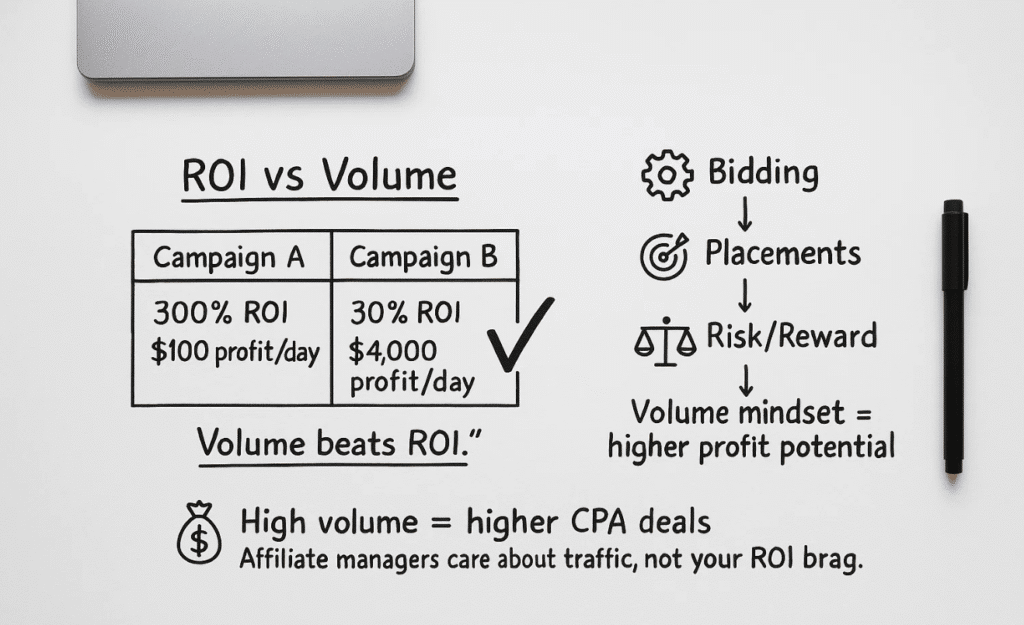
Volume Beats ROI
Here’s an unpopular opinion (especially among beginners):
Traffic volume is more important than ROI.
I get tired of hearing newbies obsess over ROI numbers.
“Hey, what ROI are you getting on that campaign?” they ask.
Honestly? I don’t really care.
Let me show you why:
- Campaign A: 300% ROI – $100 profit per day
- Campaign B: 30% ROI – $4,000 profit per day
I’d take Campaign B any day of the week.
The ROI looks worse, but the overall profit is way higher—and that’s what matters.
This mindset shift is critical because it affects how you:
- Set your bids
- Manage and optimize placements
- Think about risk vs reward
And here’s something else:
High-volume campaigns open the door to higher CPA payouts.
Affiliate managers are more likely to negotiate better rates with you when you’re sending serious volume—even if your ROI isn’t impressive on paper.
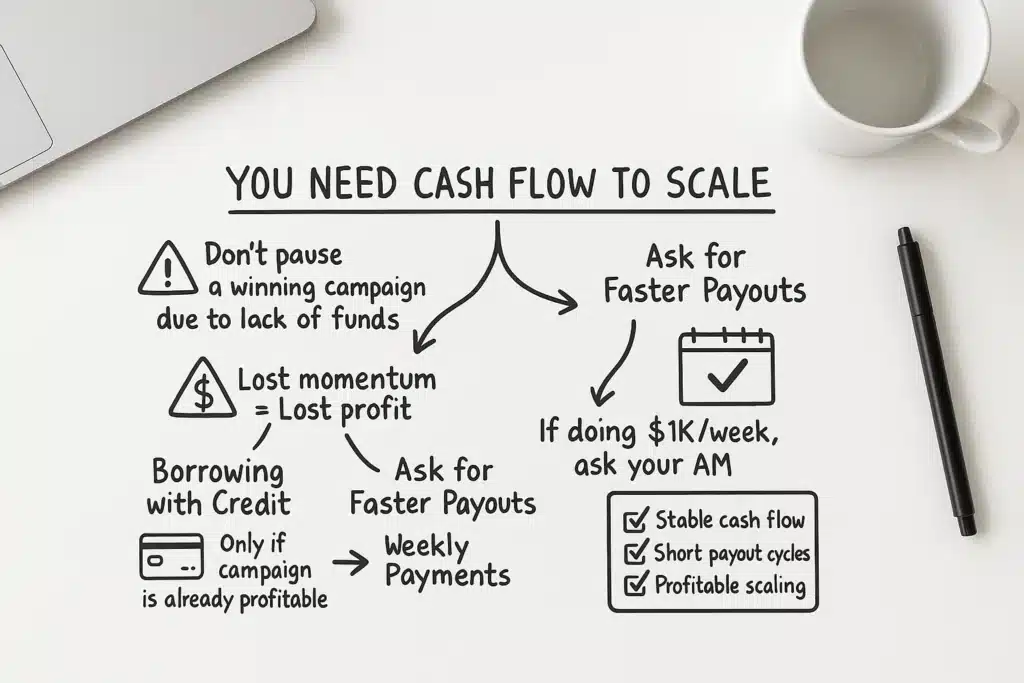
You Need Cash Flow to Scale
You can’t scale without stable cash flow.
It’s that simple.
One of the most frustrating things in affiliate marketing is having to pause a profitable campaign—just because you don’t have enough funds to buy more traffic.
I’ve been there.
At times, I ran multiple campaigns using credit cards—borrowing money to keep the momentum going when cash was tight.
Important: Only use credit if the campaign is already profitable.
Never borrow to test a campaign. Don’t go into debt gambling on an unproven offer.
Another strategy: Ask your affiliate network for faster payouts.
Most networks pay monthly by default.
But if you’re doing at least $1,000/week in revenue, you can usually request weekly payments.
So how do you ask?
Here are two examples:
- “Hey, I’m broke. Can you pay me weekly instead?”
- “Hi [Affiliate Manager], I’m scaling fast but running into some cash flow issues. I’d love to stay with your network, but I’m talking to [Competitor Network] and they’re offering weekly payments. Is there any way we could work something out? I really believe I can scale this big with your support.”
Take a wild guess which one gets better results.
Use the second approach.
Final Thoughts
Whenever I hit a profitable campaign, I don’t pop champagne.
I don’t take my team out drinking.
I double down.
We work harder.
We scale.
We push forward into new territory.
Because the parties, the vacations, the feel-good distractions—they’ll always be there.
But the opportunity to build something great?
That window doesn’t stay open forever.
People sometimes ask me:
“How are you still motivated after all these years? Don’t you ever get bored?”
The truth is, I became financially free years ago.
This isn’t about the money anymore.
It’s about not wasting what I’ve been given.
I want to live a life that’s worthy of the sacrifices others made for me.
My parents spent decades working hard so I could have a shot at this.
Business, to me, is a game.
And money?
Money is just how we keep score.


